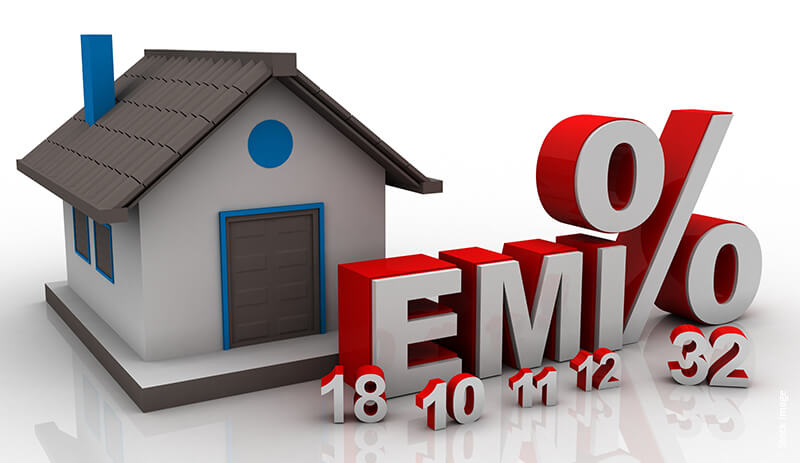There is a lot of discussion around the rate cuts or reductions in the repo rate by the Reserve Bank of India (RBI). The rate at which the RBI (Reserve Bank of India) lends money to other commercial banks in India is known as the repo rate. So, when there is a reduction in the RBI repo rate, the interest rates at which banks lend to customers should also go down.
However, it was seen that several banks often failed to pass this benefit to their customers. So, to ensure that the borrowers also benefit from RBI’s rate cuts, the Government of India introduced the Marginal Cost of Funds based Lending Rate (MCLR) on the 1st of April 2016.
In this article, we will discuss MCLR’s meaning and how it impacts home loan EMIs.
What is MCLR?
As mentioned, MCLR’s full form is the Marginal Cost of Funds based Lending Rate. It refers to the minimum interest rate beyond which banks and non-banking financial corporations (NBFCs) in India can’t lend money to end users. In other words, the MCLR rate is the internal benchmark rate for financial institutions in India for extending credits and loans, including home loans, loans against properties, and others.
Before the introduction of the MCLR, banks, and NBFCs used to lend money as per the “base rate” mechanism. Under this mechanism, financial institutions could decide the lowest interest rate to provide loans to their customers. However, now, this decision is taken by the RBI.
Why was the MCLR mechanism introduced?
The RBI introduced the MCLR mechanism on the 1st of April 2016. Earlier, banks and NBFCs used to follow the base rate mechanism for lending home loans and other eligible credits. The base rate mechanism was introduced in 2010 to ensure that banks do not lend money to their prime customers below a specific benchmark interest rate decided by all the banks.
The RBI also wanted to ensure that any changes in the repo rates were reflected in the interest rates that the banks and NBFCs are charging from their customers.
However, it was seen that most financial institutions in India often failed to bring down the base rates even a few months after the RBI rate cuts. As a result, the customers failed to get the benefits of the rate cuts promptly. So, to improve this process and ensure that borrowers get timely benefits from RBI’s rate cuts, the government introduced the MCLR mechanism in 2016.
How MCLR impacts home loan EMIs?
A borrower who has taken a home loan before the 1st of April 2016 can ask their bank to link their home loan with the MCLR rate. After linking the MCLR rate with the home loan interest rate, any RBI’s repo rate changes will directly impact the loan interest rate that a borrower has to pay.
It means that if there is a hike in the RBI repo rate, the MCLR rate will also go up, and as a result, the home loan interest rate will increase. And subsequently, the borrower’s home loan EMI amount will increase. However, do note that this will only be applicable if a borrower has chosen to link their home loan with the MCLR rate or if they have opted for the floating home loan interest rate.
Is it beneficial to switch to the MCLR mechanism?
Whether it is beneficial to switch to the MCLR mechanism depends on various factors, such as the prevailing interest rate scenario, the borrower’s creditworthiness, and the loan tenure. MCLR is a more dynamic and transparent lending mechanism that considers the latest cost of funds for the lender and is expected to pass on the benefits of any reduction in the lending rates to the borrower faster.
Under the MCLR mechanism, RBI’s repo rate changes are reflected in the bank’s home loan interest rate. So, if the RBI cuts a rate, a borrower’s home loan interest rate will also go down; hence, they will have to pay a lower home loan EMI.
However, RBI can sometimes hike its repo rate to tackle inflation or other economic disruptions. In such cases, the borrowers may end up paying higher home loan EMIs than they were supposed to at the time of the loan.
Conclusion
After knowing what is the MCLR rate and its benefits, one would be in a better position to decide whether or not they should link their home loan with the MCLR rate. But if a borrower has availed of a home loan after the 1st of April 2016, it will be automatically linked with the MCLR rate. They just need to confirm if they want to pay as per a fixed home loan interest rate or the floating home loan interest rate.
Disclaimer- This article is based on the information publicly available for general use as well as reference links mentioned herein. We do not claim any responsibility regarding the genuineness of the same. The information provided herein does not, and is not intended to, constitute legal advice; instead, it is for general informational purposes only. We expressly disclaim/disown any liability, which may arise due to any decision taken by any person/s basis the article hereof. Readers should obtain separate advice with respect to any particular information provided herein.








 Table of Contents
Table of Contents








